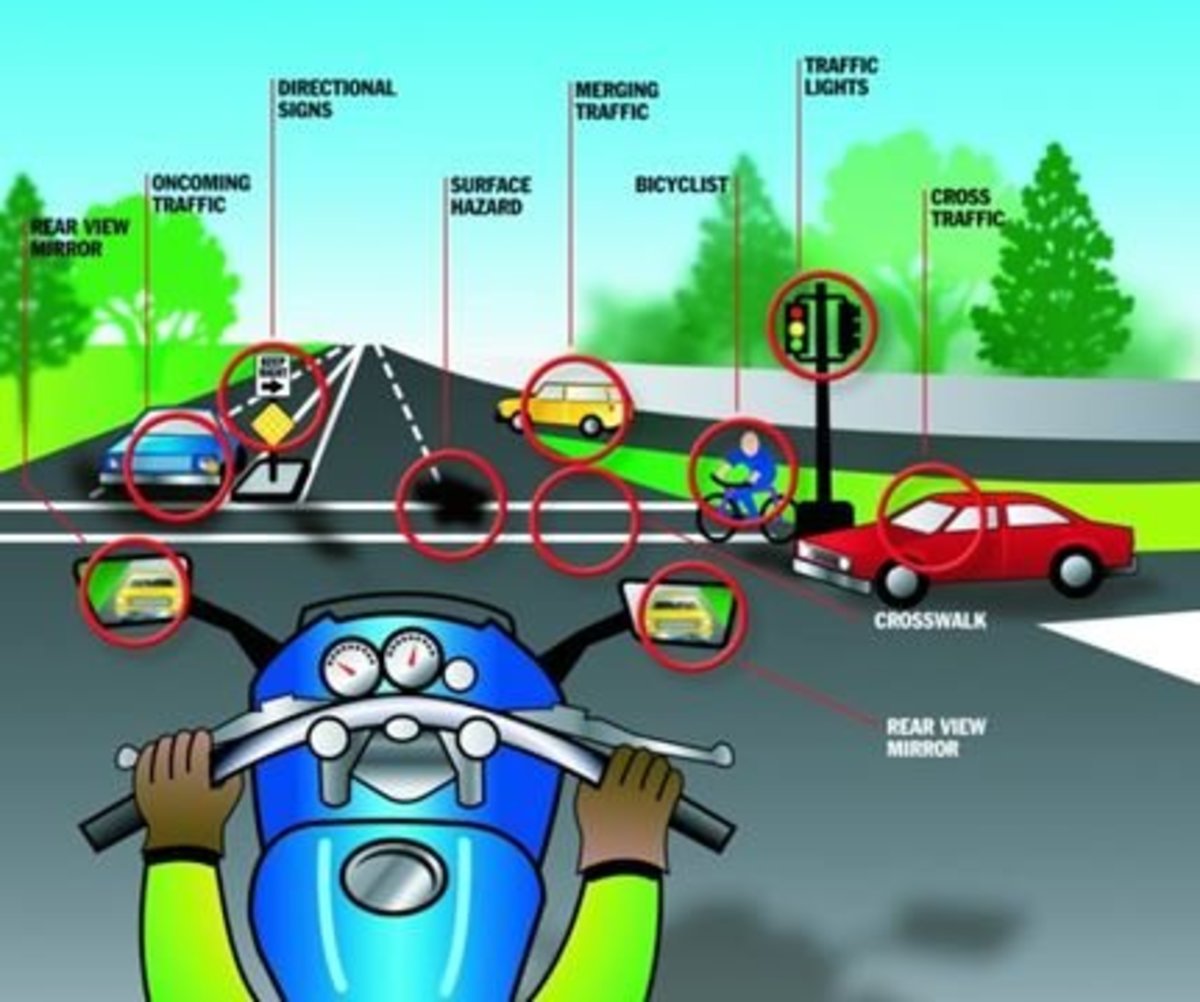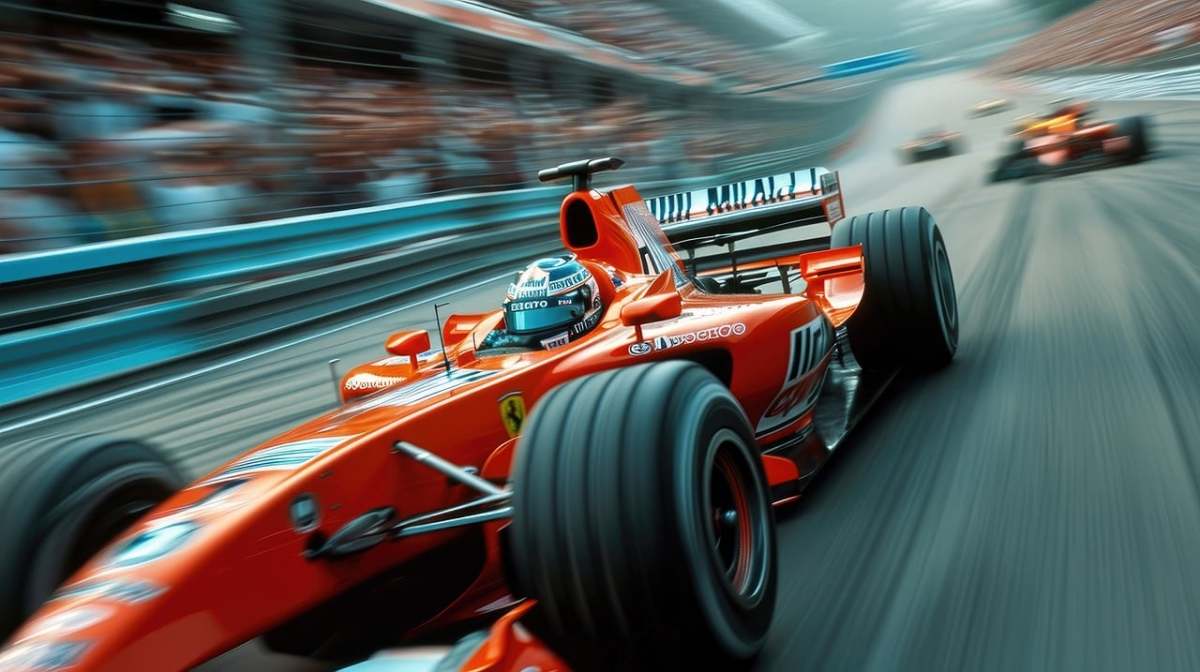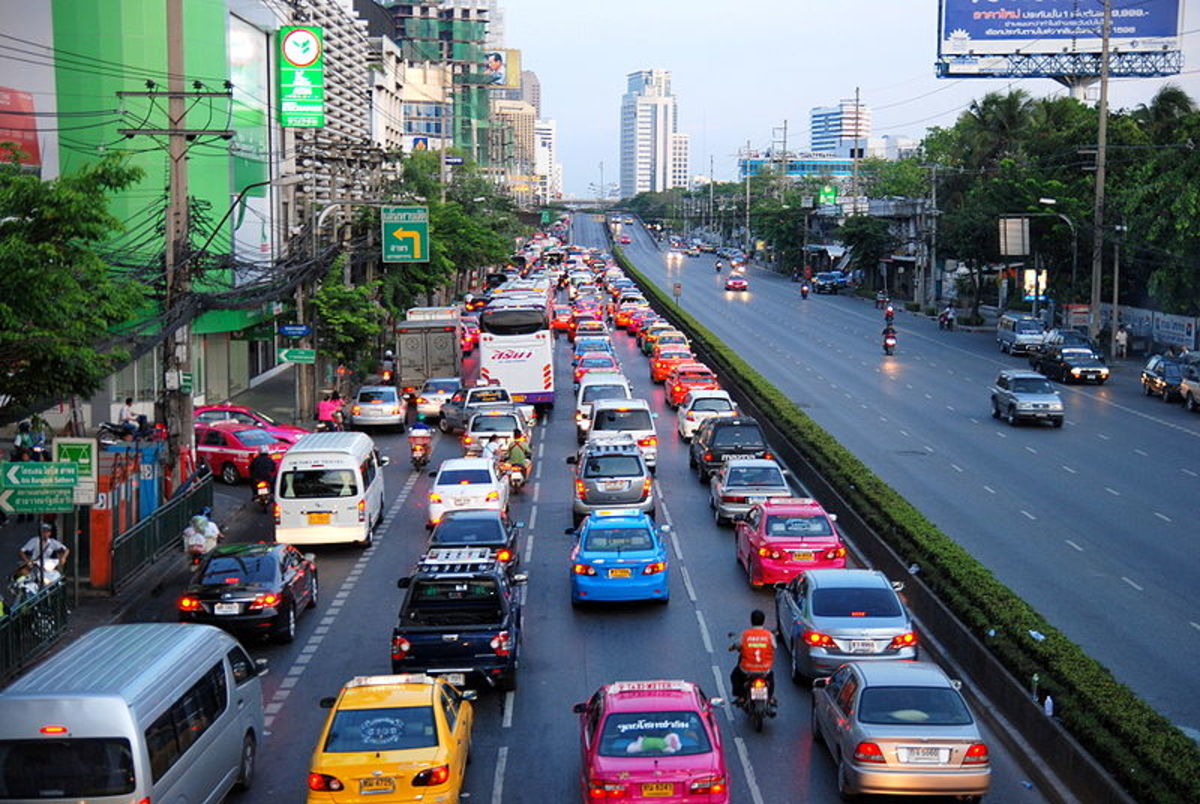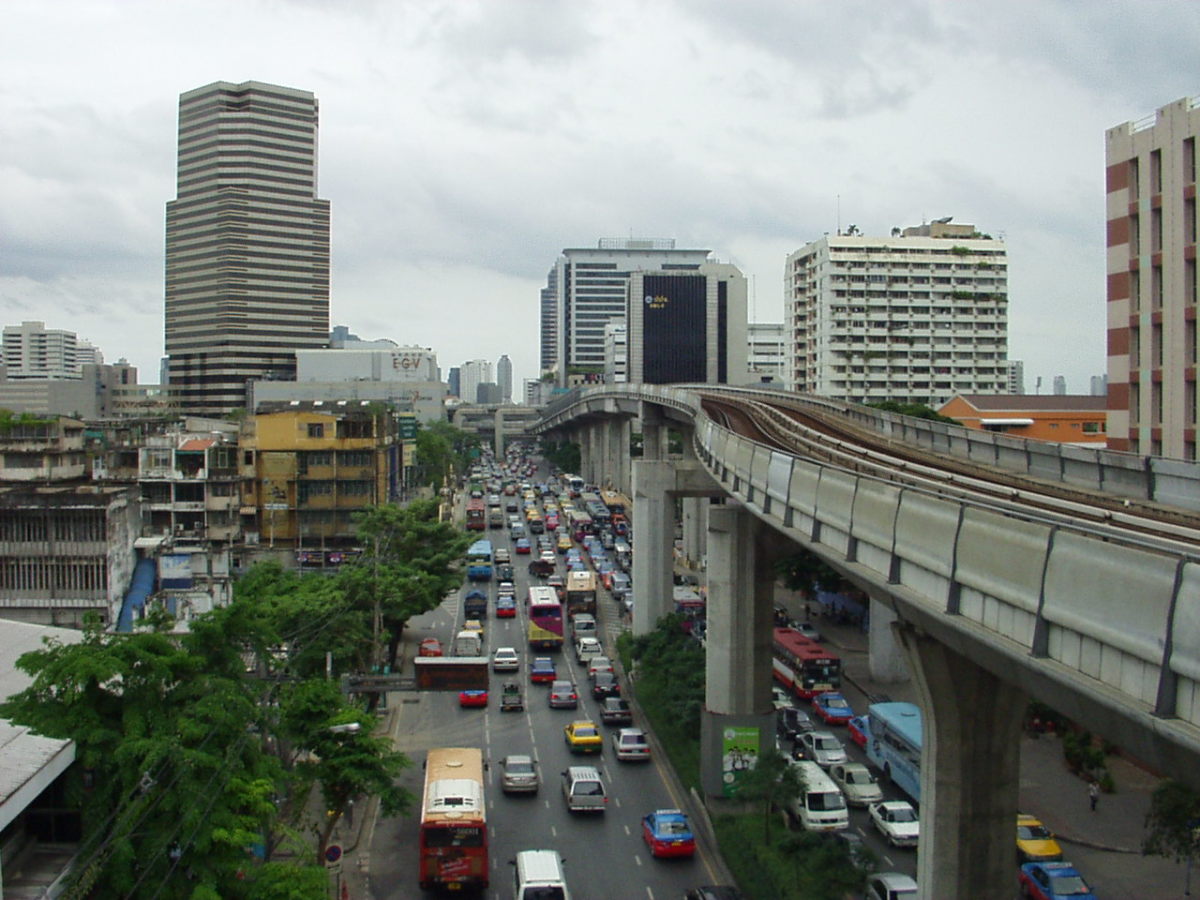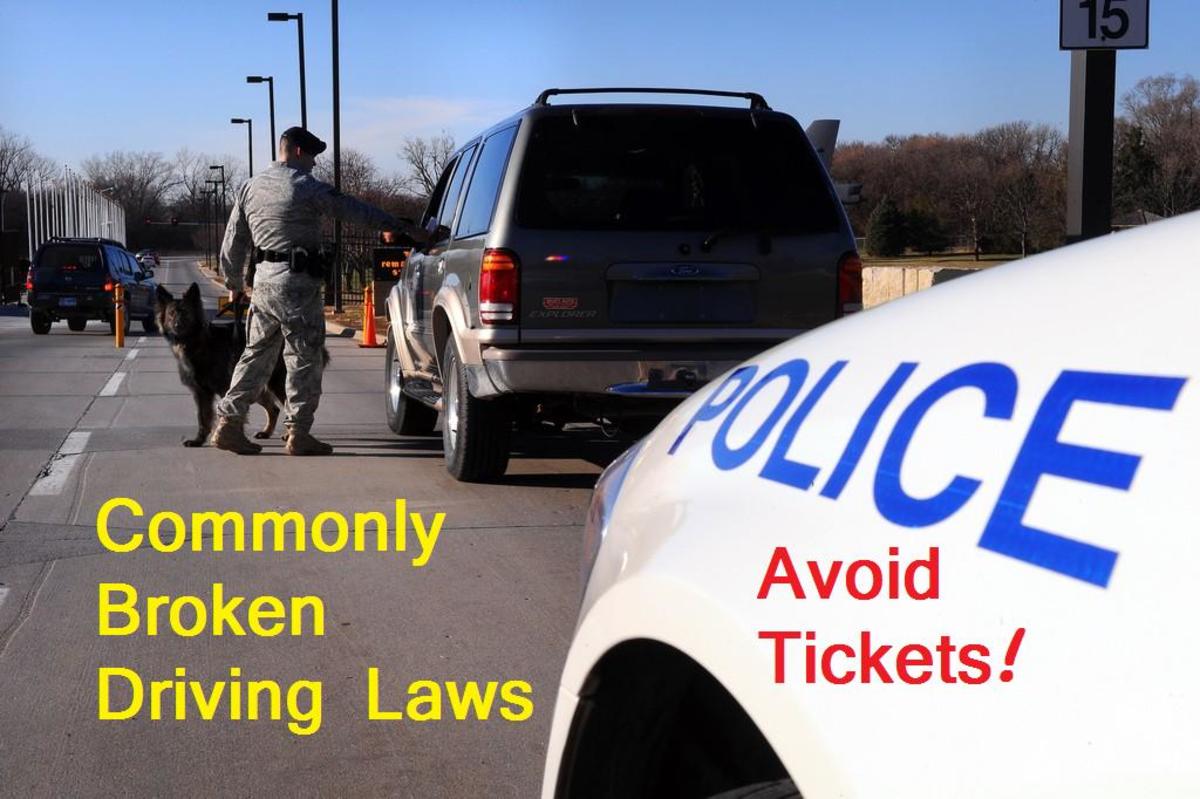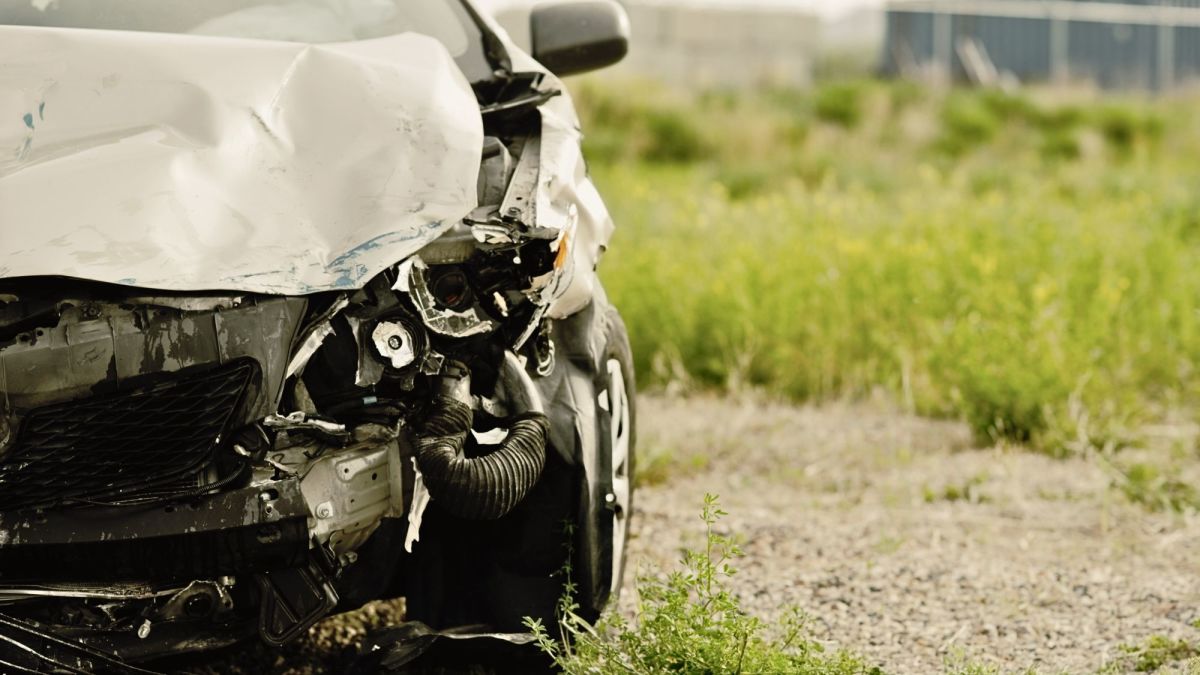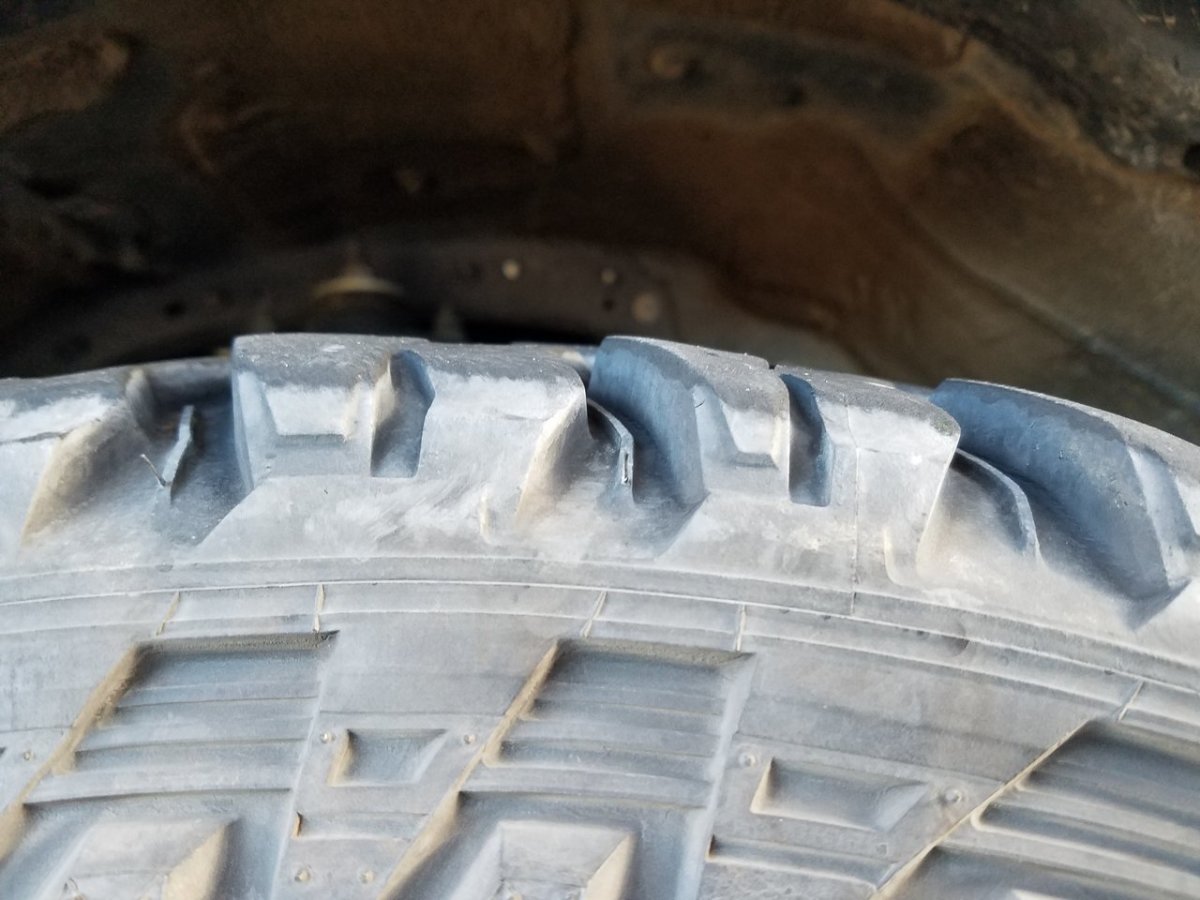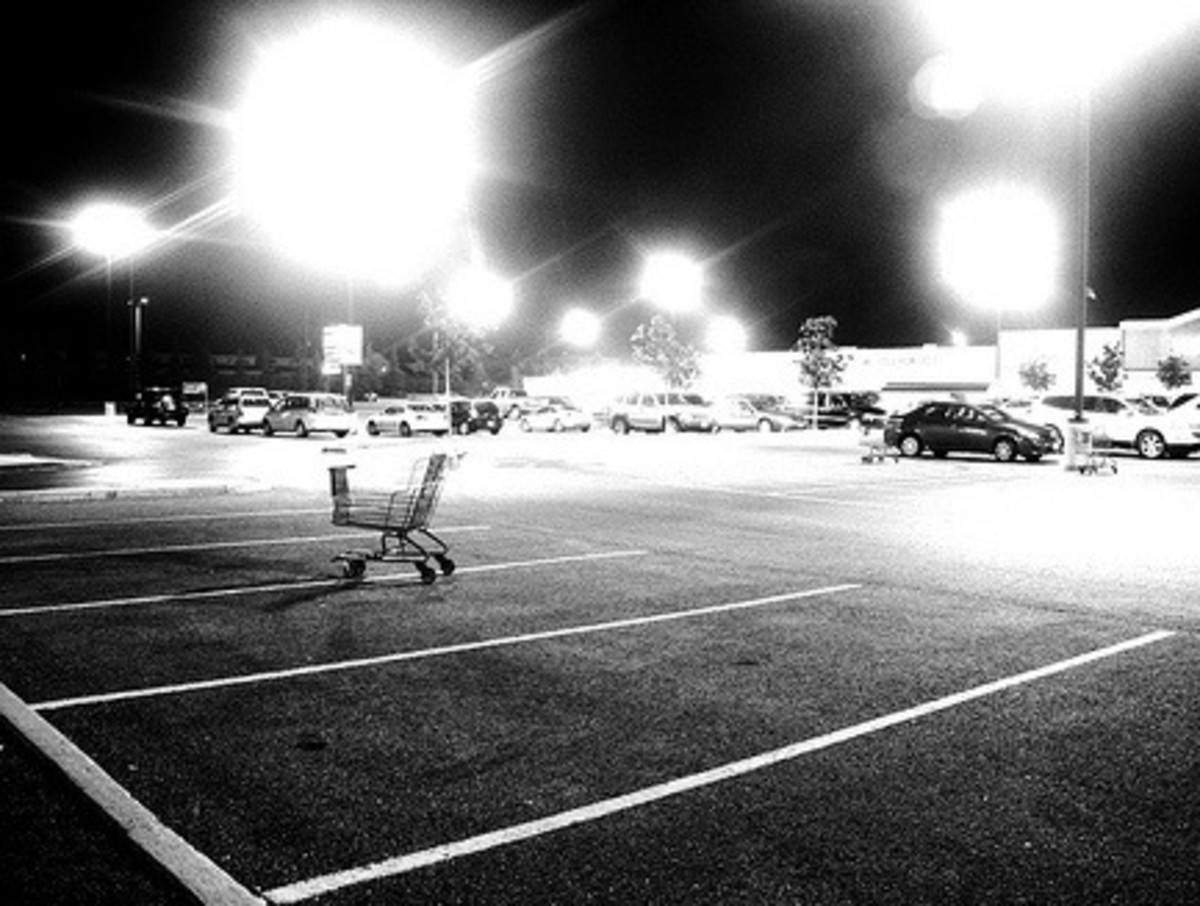So you've passed a driving test ... Now learn to DRIVE!
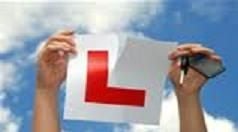
Now you can go solo - but are you a good driver?
You've done hours of driving lessons, passed the test, now you're on the road. Maybe you've driven for years, but have you continued to learn to drive? Do you really know the Highway Code, how to drive on motorways, how to signal at roundabouts, how to change lanes? Are you considerate to and aware of other road users? Driving skills are not just about speed and getting there. Here's a few hints and tips, do's and don'ts, of my own.
So, you've just passed your driving test, or perhaps you've been on the road a few years now, but is your driving really up to scratch?
I've been driving for over fifty years and I reckon the experience I have gained in that time entitles me to have a view.
Britain has millions of drivers of all ages and many of them are awful! The vast majority of drivers seem to think that what you learned while practicing for the Driving Test was all there is to know. Once they get that pass certificate they tear up the 'L' plates, recycle the Highway Code, and whiz off down the road into the wide blue yonder. The only important thing after that is getting where they want to get as quickly as possible avoiding any obstacle that might get in their way. The whole process becomes 'dog eat dog' and it's every man/woman for themselves!
Don't get me wrong! I'm not necessarily talking about speeding here. I can hear many of you saying, "Well I'm OK! I never drive fast." THAT can be part of the problem! Not only are you possibly just as dangerous, you may be very irritating to other road users!
Updated 14th January 2015
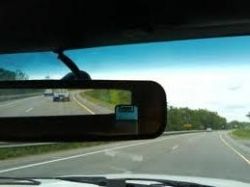
Tip #1 - Look in your **** mirror!
On your driving lessons you probably learned the phrase, "Mirror, signal, manoeuvre". You probably (but not necessarily) look in your rear view mirror before turning or changing lane etc., but how often when driving along a straight road do you check what's going on behind you?
"Why bother?" I hear you say, "I'm not going to 'manoeuvre' any time soon!" WRONG! You should be constantly aware of any traffic approaching from the rear or at the side.
As you drive, the traffic situation ALL AROUND you is constantly changing. In fact it can change dramatically in a split second.
Suppose another vehicle has caught you up and is now close behind. You are unaware of its presence because you rarely check your mirror. Something unexpected suddenly happens in the road ahead of you. You jam on the brakes. Crash!
While I am driving, I am constantly aware of my surroundings because I glance in my rear view mirrors every few seconds. That way I know if there are vehicles behind me that will want warning of my next action if any. There may be someone traveling too close. Perhaps some idiot is sitting in my blind spot. If I am uncomfortable about my surroundings on the road, I can consider what action to take, eg., go a little faster, pull over to let someone pass, etc.
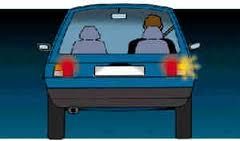
Tip #2 - What your indicators are REALLY for!
I am amazed by the number of car drivers who seem to be vague, or even totally clueless, about using the vehicle's indicators. Some have actually said to me things like, "I'm never sure which way you're supposed to signal while going round a roundabout," or "when you signal, other people are supposed to let you in, aren't they?"
It seems to me some driving instructors must have said to the learner once at some point, "When you turn a corner, put your indicator on." This has been interpreted as, "Just AS you turn a corner, put your indicator on," and adhered to by the driver for ever more.
Many drivers appear to think their indicators are part of the mechanics of the vehicle. On approaching a corner, the procedure is brake to slow down, turn the steering wheel to guide the car round the corner, then finally put the indicators on! There is no thought in their mind as to why they signal or who they are signaling to.
Many drivers never signal at all. Perhaps they can't be bothered! Perhaps they can't see the point!! Or perhaps they are too stupid to do something so complicated!!!
Lesson: The whole point of signaling is to let other road users know what you INTEND to do BEFORE you do it! And, by other road users I mean not just the car behind, but the cars behind him, cars in front of you going in either direction or waiting to come out of a side road, and all pedestrians, cyclists, and bystanders. They can only decide what they are going to do next if they know what you are about to do. Be constantly aware of EVERYONE around you whether driving or on foot, and let them know your intentions by INDICATING in good time.
Apart from anything else, it is a common courtesy.
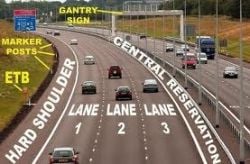
Tip #3 - Motorways - Madness and Myths
I took my driving test about the time the M1 motorway was opened in 1959 so you could say I grew up with them. Nowadays, after a few three-point turns and emergency stops in a quiet back street, as far as I know, once they pass the Driving Test, novice drivers can go straight out and join the mayhem that is the British Motorway System.
No wonder so many motorway drivers get it so wrong!
Take lanes. Nobody is sure what to call them. On the average motorway there are three lanes. I've heard the various ones called: the inside, nearside, lorry lane, slow lane, middle, cruising, car lane, overtaking lane, outside, offside, fast lane. Hardly surprising that drivers don't know who is supposed to use which lane and for what purpose.
Actually it's all clearly explained in the Highway Code.... Tip #3 - READ IT!!
The worst and most talked about offenders are the so-called "middle-lane hogs", but there are many more habits which are just as dangerous and irritating to other drivers. I will try to list them below.
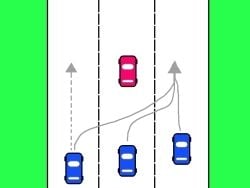
Idiot #1 - The "Middle Lane Hog"
You meet one every mile or so on every motorway. The driver who should be in the left-hand lane, either because it is empty or because they are traveling no faster than any vehicles that are in it. If there are reasonable gaps in the left-hand lane they should get into one and leave the "middle lane" for faster vehicles. The "middle lane" is one of the overtaking lanes and the offender is blocking it.
I have seen more discussion, in the media and online, about this topic than any other to do with bad driving.
The "middle lane hog" will poodle along for mile after mile at the same steady slow speed, seemingly unaware of the irritation they are causing or the potential danger. Either that or they have deluded themselves that (a) they are supposed to be in that lane because it is the "cruising" lane or (b) they are so arrogant they believe they have a right to drive in any lane they want at any speed that suits them or (c) it's the safest place to be on the motorway and they are scared stiff, gripping the wheel, and staring into the distance, terrified of ever changing lanes. Perhaps the latter should not be on the motorway in the first place.
"Middle lane hogs" cause other frustrated faster drivers to go to the right-hand lane to overtake them. Many of these will cut right back across their bows into the left-hand lane to "teach them a lesson!" Some will overtake on the left-hand side, "undertaking". Both of these ploys are dangerous and seldom have any effect anyway. The oblivious lane hog carries on regardless!
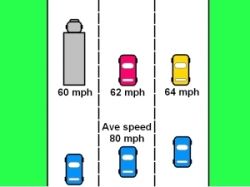
Idiot #2 - The Slooooow Overtaker
If you have ever been held up on a motorway in a solid traffic jam either at a standstill or moving very very slowly, waited in the queue until the congestion finally eases, and then gradually speeds up again and the cause of the hold-up is a mystery, you may have been a victim of Idiot #2.
Slow overtaking causes more motorway congestion than anything else. Here's how it happens.
In the picture a lorry is travelling at 60 mph in the left hand lane. All perfectly legal and sensible. The idiot in the red car travelling at 62 mph has gradually caught up behind the lorry and has decided to pull out into the next lane to pass it. He does not increase his speed to quickly overtake as required by the Highway Code, but he simply carries on to pass the lorry at a relative speed of 2 miles per hour.
The idiot in the yellow car travelling at 64 mph has now caught up with the red car and does likewise. He is now in the right-hand lane passing the red car at a relative speed of 2 mph and the lorry at a mere 4 miles per hour!.
The traffic approaching from behind is now catching up to this slow-moving barrier at a relative average speed of about 18 miles per hour and has to slow down. Wave after wave of traffic back along the motorway is having to go slower and slower until it may come to a complete standstill!
Never mind, the thoughtless pair of idiots causing the problem will eventually get clear and hopefully pull over into the left-hand lane, allowing everyone else to get on their way.
Between them, the idiots in the red and yellow cars have now formed a moving barrier right across the three lanes of the motorway, of which they are no doubt TOTALLY UNAWARE! This barrier is proceeding at 60-64 mph.
You may not like it, and you may be one of these old duffers who "knows the law, and that the speed limit on motorways is 70 mph", but the FACT IS that the normal traffic on most British motorways averages 80 !
Tip #4 - Adjust your speed to suit the flow of traffic. Sometimes it is better to slow down slightly and follow a vehicle than try to get round it. If you must overtake, wait for an opportunity, signal clearly, pull out safely, accelerate to get past as quickly as possible, then when you are well clear, signal and return to the left-hand lane. Think of others and do your best to keep the traffic flowing!
Amazon Books and DVDs about Driving
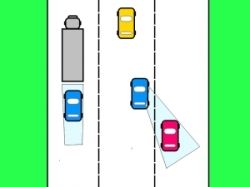
Idiot #3 - The Blindspot Clot
Ever heard of the 'blind-spot'? I bet some drivers haven't and don't have a clue what I'm on about.
The blind-spot is an area on the road just to the rear of any vehicle which the driver can not see in any of his mirrors. The blind-spot differs from one vehicle to another and can be made worse, ie., bigger, by badly adjusted or broken mirrors. The blind-spot can exist on both sides and on larger vehicles, such as lorries, buses, vans, it can extend right across the rear.
In this picture, the lorry driver can't see the blue car behind, so doesn't know he is there.
Tip #5 - If you are behind a lorry and you can't see his wing mirrors, HE CAN'T SEE YOU !
The idiot in the red car is driving at the same speed and sitting in the other blue car's blind-spot. The blue car is catching up to the yellow car and may want to pull out to overtake. Either the driver is unaware of the red car (accident waiting to happen) or is frustrated by it's presence knowing that it is blocking his path to the overtaking lane.
Tip #6 - Anticipate what other drivers may want, or need, to do and give them room to do it safely, either by accelerating past or easing back to create space.
It can be very irritating and potentially dangerous when another vehicle persists in traveling along a road in a driver's blind-spot. I have had this happen so many times when another driver is absent-mindedly poodling along behind me in the next lane just over my right shoulder. I can't see him in my rear-view mirror or in my wing mirror, and he is too stupid to realize that I may not know he is there.
However, being aware of my blind-spot, whenever I am preparing to change lanes, I not only check ALL my mirrors, but also glance over my shoulder to make sure!
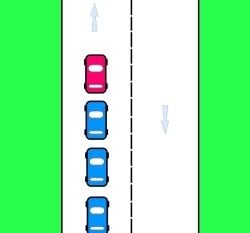
Idiot #4 - The Follow Me Fool
Are you always at the front of a queue of traffic? Is there always a very big gap between you and the car in front? Do all the other "idiots" on the road keep overtaking YOU? Do you find other drivers getting very close behind you while you chant, "Only a foooooooool breaks the 2 second ruuuuuuuuuule?" Do you think smugly that you are the only driver who keeps well within the legal speed limit?
If like the driver of the red car you always have a line of cars following you, it may be time to consider why that is. If it happens all the time and you are aware of it because you DO OCCASIONALLY check your mirror, perhaps it is time to consider why this might be.
Most traffic maintains a speed that is right for the road it is on, the conditions at the time, ie, surface, weather, light etc, and the presence and actions of other road users, whether traveling or on foot. As these conditions continually change, most good drivers will slow down or accelerate accordingly, usually keeping a balance between the legal limits and commonsense.
The driver who insists on permanently sticking to a certain speed because of some idea that it is "safe", "economical on fuel", "WELL within the limit", or "better for Grandma to enjoy the view", needs to be aware that other drivers may not agree or understand what the holdup is.
Frustrated drivers, can sometimes lose their cool at inconsiderate poodlers and this may prompt them to take inappropriate action. Such actions can have disastrous consequences!
Be aware, speed up a little (legally), or pull over and let people pass, whenever it is safe to do so.
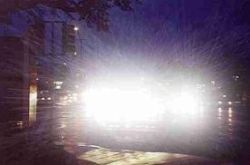
Idiot #5 - Flash Gordon
Some drivers (too many for my liking) have worked out their own special form of communication on the road. It's a sort of simple morse code sent via the car's headlight dip switch to other drivers.
However, unlike morse which has at least 36 characters made up of sequences of "dots" and "dashes", the flashers' code is considerably more simple, easier to learn, and infinitely more useful. Flash Gordon's code is made up of just two characters, one flash or two flashes, and can be used to send amazingly complicated messages.
The main drawback with this system is that only the sender can understand the message! Nobody has yet worked out a way for the other driver to decode or decifer the meaning of the message when they receive it!
Once the idiot, Flash Gordon, or should I call him Flash Harry, has adopted this code, he uses it constantly. Here's a few examples of the messages he sends:
** "Thank you so much for stopping to let me through at a point where the signs say I have legal priority anyway. I feel I just have to express my gratitude!"
** "Get over! Road hog!!"
** "Hiya, Charlie, how's it going?"
** "Your raincoat belt is hanging out of your door, you muppet!"
** "There's a copper just ahead of you round the next bend with a speed camera."
** "I saw you pull over and stop to let me through that narrow bit between us, but I thought I would stop too and ask you to come through first. Aren't I a nice person?"
** "I am about to do something. Guess what it is!"
** "I want YOU to do something. Why aren't you doing it, MORON!!"


